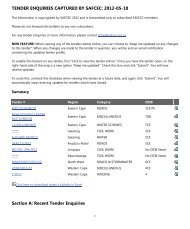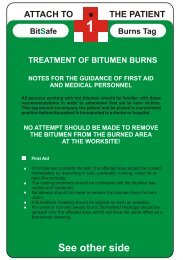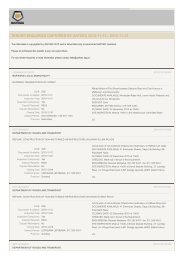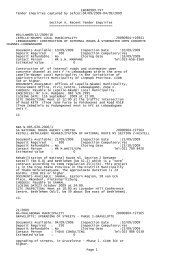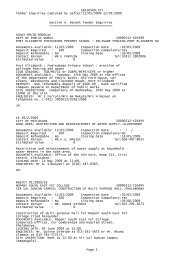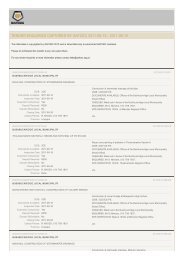DIGEST 2006 - Sabita
DIGEST 2006 - Sabita
DIGEST 2006 - Sabita
You also want an ePaper? Increase the reach of your titles
YUMPU automatically turns print PDFs into web optimized ePapers that Google loves.
Adequate layer bonding critical:<br />
Bond and tack coats to improve<br />
total structural integrity<br />
Kobus Louw<br />
Research and Development Manager<br />
Colas SA (Pty) Ltd<br />
Worldwide, the design<br />
and construction of<br />
long lasting asphalt<br />
pavements is becoming<br />
increasingly important as<br />
greater demands are placed on<br />
the performance of these<br />
asphalt layers.<br />
Adequate bonding between<br />
asphalt layers is critical if the<br />
completed structure is to behave<br />
as a single structural unit and<br />
provide adequate strength. If the<br />
layers are not properly bonded<br />
together, they will behave as<br />
independent thin layers.<br />
Generally, such individual layers<br />
are not designed to accommodate<br />
the stresses imposed by current<br />
traffic patterns. Damage due to<br />
fatigue and deformation proceeds<br />
at a faster rate when a proper<br />
bond has not been created,<br />
resulting in rapid deterioration of<br />
the pavement structure.<br />
Inadequate bonding can result in<br />
delamination, cracking, potholes<br />
and ingress of water into the<br />
pavement structure.<br />
Over-application of the tack coat<br />
can result in slippage of the<br />
asphalt layers due to the<br />
lubricating effect of the excess<br />
binder.<br />
Tack coats<br />
Tack coats have traditionally been<br />
used in South Africa for improving<br />
the adhesion of hot mix asphalt<br />
layers to the substrates on which<br />
they are placed. These mixes are<br />
usually placed at a thickness of 15<br />
– 60mm. Anionic stable mix<br />
emulsion diluted with equal<br />
quantities of water is commonly<br />
used for this purpose. The<br />
application rate specified in COLTO<br />
is 0,55 l/m 2 for a 30% binder<br />
content emulsion, leaving a net<br />
residual binder application of<br />
approximately 0,165 l/m 2 . The<br />
method of application is often with<br />
a hand sprayer, and the resulting<br />
spread rate and evenness of<br />
application usually leaves much to<br />
be desired and may be referred to<br />
as “a lick and promise”. Paving<br />
can only commence after the<br />
emulsion has “broken”.<br />
130



